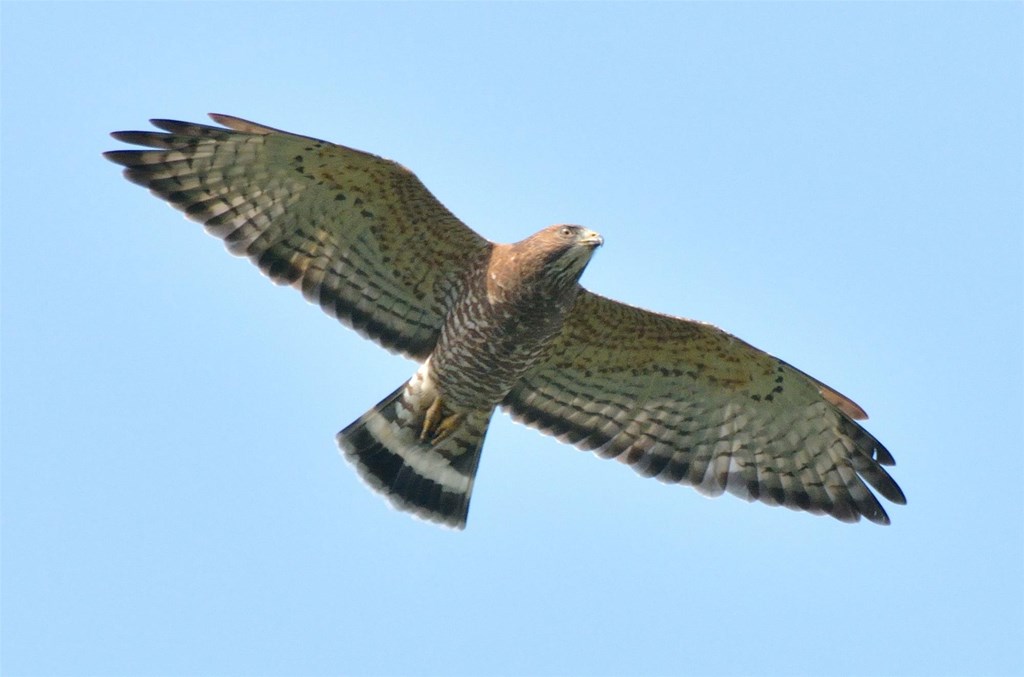Audubon Scientists Use Hawk Mountain Data to Develop a New Method for Mapping Bird Migrations
Posted on September 08, 2022 in Science

By Laura Berry, Science Communications Intern
“Migratory birds complete some of the most impressive journeys on earth, and this new method of mapping their migrations gives us a clearer picture of the places these birds travel,” remarks Dr. Tim Meehan, quantitative ecologist for the National Audubon Society, about his recently published study in Ecological Applications, titled “Integrating data types to estimate spatial patterns of avian migration across the Western Hemisphere.” Click here to read.
The study is a collaborative effort, referencing data collected from over 40 biologists across more than 25 different conservation organizations and institutions in North America. Co-authors on the publication include Hawk Mountain Sanctuary’s Sarkis Acopian Director of Conservation Science Dr. Laurie Goodrich, Senior Research Biologist David Barber, Research Biologist Dr. Rebecca McCabe, and former Director of Conservation Science Dr. Keith Bildstein. Their research on the migration of broad-winged hawks and turkey vultures is included in the 12 species of the study’s focus.
Since 2014, Hawk Mountain’s Broad-winged Hawk Project has been studying broad-winged hawk ecology during the breeding and nonbreeding periods. Using satellite telemetry and GPS technologies, researchers can track individual birds during their migration between North and South America, including where birds are stopping along their journey. Little is known about their overwintering, migration, and nesting behaviors, which is why Hawk Mountain’s research is incredibly important for determining the routes and habitats of conservation concern for this long-distance migrant. Another understudied migratory raptor species, the turkey vulture, has been a focus of study at Hawk Mountain Sanctuary as well, though their seasonal travel usually covers far less distance.
As opposed to broad-winged hawks, turkey vultures are considered partial migrants, with some populations migrating less than a thousand miles and others over 4,000 miles. Western populations of the species tend to migrate a greater distance, whereas eastern populations tend to migrate a shorter distance, if at all. Tracking the movement patterns of these birds using satellite telemetry, Hawk Mountain researchers have been able to correlate movement and environmental conditions–patterns which overall indicate a general adaptability towards climate change. This is good news for vultures, but for many migratory species of birds the correlation between successful migration and climate change is still unknown.
Focusing on the broader scale of all migratory species, Audubon’s study goes beyond raptors. The representation of different bird families, migratory strategies, breeding ranges, and available dataset sizes across the dozen selected species ensures no bias towards a particular genus or family’s unique migratory behavior. To summarize, migration data from each species was collected via occurrence and abundance models, represented by eBird Status products from the Cornell Lab of Ornithology; band re-encounter data, provided by USGS Bird Banding Laboratory; and tracking datasets, provided by researchers like Hawk Mountain Sanctuary, and displayed through Movebank. The data was then used to create a comprehensive, accurate map of migratory bird movements across the Western Hemisphere.
The importance of this study goes far beyond just having a better understanding of annual migratory cycles: recent population declines of many migratory bird species suggest there is a lack of conservation focus on those habitats of greatest significance to threatened and endangered species. With the results of this study, scientists can begin to piece together a more complete annual cycle of many migratory species whose travel routes remain understudied, which will contribute to a greater understanding of the habitats that should be protected.
To learn more about the largescale study and results, click here to read the full press release from the National Audubon Society.
Click to learn more about Hawk Mountain's research on broad-winged hawks and New World vultures. Want to directly support these projects? Click to Adopt a Broadwing or Adopt a Vulture.